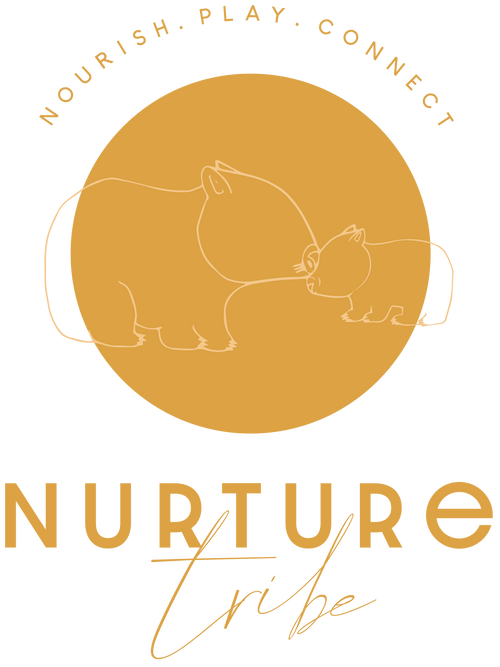Did you know that about 80% of unwanted clothing goes to waste? Some of this waste includes kids’ clothing. Children grow quickly, increasing the number of outgrown clothing.
The growth of a newborn baby to a four-year toddler may need you to buy several sizes of clothing that fit well during that time frame. This means you have to continually buy clothes for your kids and sent the old clothes to landfills.
Fortunately, investing in sustainable kids' clothing can help you reduce this waste. Below are the top tips to help make your kids’ wardrobe more sustainable...
Choose Quality Over Quantity
Kids are always on the move and they may end up roughing up their clothes. If you want your kids’ clothing to last, avoid clothes with thin fabrics. They tend to wear out quickly, meaning you have to replace them often.
When you shop for your kid’s clothing, make sure you consider durability. Investing in pieces that last not only gives sustainable fashion a chance in your child’s wardrobe, but it also reduces the hassle of having to replace your kids’ wardrobes several times a year. Choosing high-quality clothing instead of quantity also helps to reinforce the principle that you should make purchases with intention.
Also, if a minor issue like a hole or a tear can be repaired simply with a needle and thread, this will save you money too.
Shop Sustainable Clothing Brands
Children’s clothing is the epitome of fast fashion. However, the production of fast fashion materials is bad for the environment. From low-quality materials to non-eco dyes and finishing chemicals, these things end up polluting the air and oceans.
To protect the environment, you should consider shopping for sustainable kids' fashion brands. These brands often use finishes and materials that are kinder to the environment.
They also provide organic kids clothes with better quality and durability. This reduces the amount of clothing you need to dispose of. Look for products with stamps & credentials such as made from recycled fabrics, GOTS (Global Organic Textile Standard), Fairtrade, Ecocert, Cradle to Cradle, Bluesign and NOP (National Organic Program).
Some of the sustainable kids' clothing brands we stock includes:
Choose Sustainable Fabrics
While synthetic fabrics have a place in fashion for durable winter jackets and swimsuits, you should try to mostly buy eco-friendly fabrics for your child.
Aside from using toxic production processes, you don’t want your kid wearing synthetic clothes as they can irritate the skin.
Look for kids' clothing with natural fibres like organic cotton, hemp, or linen that come in a solid or easy-to-clean print. They are not only good for the environment but also kid-friendly and comfortable. Natural fibres have little to no irritation to your child’s skin.
Additionally, most sustainable fabrics in kids' clothing are antibacterial, hypoallergenic, and moisture-wicking.
Spend More Money on the Basics
While flashy and tasselled kids' clothing may seem attractive, they are often unsustainable. Your child won’t wear them often.
To shop sustainably, focus on getting the basic pieces of clothing. Basic kids' clothing includes shirts, shorts, skirts, pants, socks, and sweaters. Your child can wear them anytime and for any occasion.
When buying sustainable kids clothes, also consider how many times your kid will wear the clothes. If you pick clothes that will be worn less than 30 times, you should not buy them, as they will often end up in landfills after a few wears.

Size Up 1-2 Sizes
The average lifespan of clothing is between two and three years. Since your child outgrows clothes fast, you should consider buying clothes that are one to two sizes bigger. This will help increase the usage of their clothes.
When you buy bigger clothes, you can roll them up or hem them to fit your kid. As they grow, you can let the clothes out. You can do this by yourself or hire a professional tailor.
What’s more, you can use hacks like letting your girl wear tops as dresses. This is an effective strategy since small kids don’t have a definite body shape.
Be Minimalistic and Create a Capsule Wardrobe
Too many clothes for your kids are not only devastating to the environment but also overwhelming. Creating a capsule wardrobe allows you to reduce the excesses and become more sustainable. The process involves purchasing a set number of clothes that you can mix and match with others to generate several outfits.
It helps keeps things very simple, especially when you are deciding what they have to wear. Building a capsule wardrobe will depend on your kid’s age, gender, style, and more.
But before you start, you must decide how many pieces of clothing your kid needs. It’ll make shopping much easier.
Avoid Cheap and Slave Labour Made Clothes
Unfortunately, most fashion brands tend to use cheap, slave labour. You don’t want to support these unethical practices by buying their products.
To ensure the safety of workers, you should buy clothing for kids from sustainable and ethical brands. Before you purchase kids' clothes from a brand, look them up online and check out their history and any sustainability initiatives.
Apart from checking the quality of their products, also research their suppliers. Avoid brands that work with suppliers that promote slave labour.
Prioritise Secondhand Clothing for Kids
Looking to save money on kids' clothing? Secondhand clothing is the way to go. It is not only affordable but also sustainable. They help extend the life of kids' clothing and reduce the amount of waste sent to landfills.
When shopping for secondhand clothing, ensure it’s safe for your child. Focus on shops that offer high-quality secondhand pieces.
If you have older kids in the family, hand-me-downs work a treat too.
Buy Sustainable Kids Clothing
Investing in high-quality, sustainable kids clothing makes social, financial, and environmental sense. It also allows you to create a cleaner planet for them.
At Nurture Tribe, we can hook you up with kids' clothing from sustainable brands and help you have a fun and purposeful shopping experience. Explore our stock in-store or online today!


